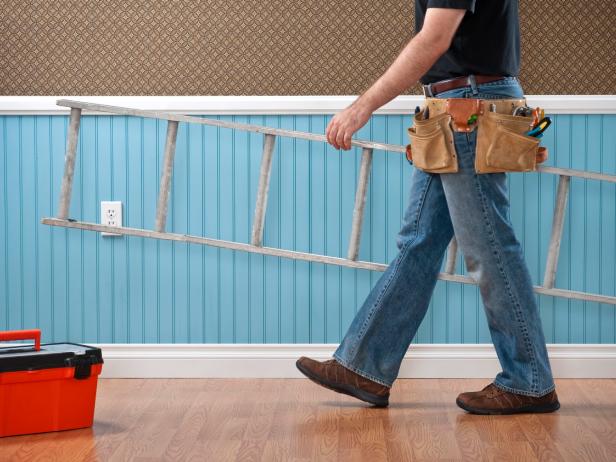Looking to give your showroom and exhibits in Santa Rosa a fabulous makeover? We’ve got you covered! Whether you want to revamp your space for a modern and sleek look or create a cozy and inviting atmosphere, we have some fantastic commercial remodeling ideas for you. From innovative lighting solutions and versatile display systems to interactive technology and eye-catching signage, we’ll help you transform your showroom into a captivating experience for your customers. With our expertise, you can create a space that not only showcases your products but also leaves a lasting impression on anyone who walks through your doors. Let’s dive into the world of exciting possibilities and bring your showroom and exhibits to life!
Unlock the potential of your showroom and exhibits with Concept Design Develop INC, the experts in commercial remodeling ideas in Santa Rosa.
Commercial remodeling ideas for showroom and exhibits in Santa Rosa
Here’s an outline of commercial remodeling ideas for your showroom and exhibits in Santa Rosa:
Lighting Enhancement:

Upgrade to energy-efficient LED lighting fixtures throughout the showroom and exhibits. LED lights not only consume less energy but also provide better illumination and color rendering.
Incorporate different lighting techniques, such as spotlights, track lighting, or recessed lighting, to highlight specific products or focal points.
Use dimmable lighting options to create different moods and adjust the intensity based on the time of day or specific events.
Consider installing accent lighting to draw attention to specific areas or displays.
Use color-changing LED lights to add visual interest and create a dynamic atmosphere.
Install lighting controls that allow you to easily adjust the lighting levels and colors to suit different product displays or themes.
Incorporate natural lighting elements, such as skylights or large windows, to maximize natural daylight and reduce the reliance on artificial lighting.
Use lighting fixtures with adjustable beam angles to direct the light precisely where it’s needed.
Incorporate lighting that complements your brand identity and enhances the overall aesthetic of the showroom.
Install well-placed mirrors to reflect and distribute light, creating a more spacious and illuminated feel within the showroom.
Interactive Displays:

Integrate touch screen displays throughout the showroom and exhibits to engage customers and provide them with interactive experiences.
Use touch screens to showcase product catalogs, virtual tours, or interactive product demonstrations.
Incorporate interactive kiosks where customers can browse through product information, check availability, or place orders.
Implement augmented reality (AR) or virtual reality (VR) elements to allow customers to visualize products in their intended environments or try virtual demos.
Provide interactive stations where customers can customize and personalize products according to their preferences.
Use gesture-based or motion-sensing technology to create interactive displays that respond to customers’ movements.
Incorporate interactive digital signage that displays dynamic content, such as promotional videos, customer testimonials, or real-time updates on events or offers.
Integrate QR codes or NFC technology to enable customers to access additional product information or special offers via their smartphones.
Implement interactive games or quizzes related to your products or brand to engage and entertain customers.
Ensure the interactive displays are user-friendly, intuitive, and provide clear instructions for customers to navigate and interact with ease.
Versatile Display Systems:
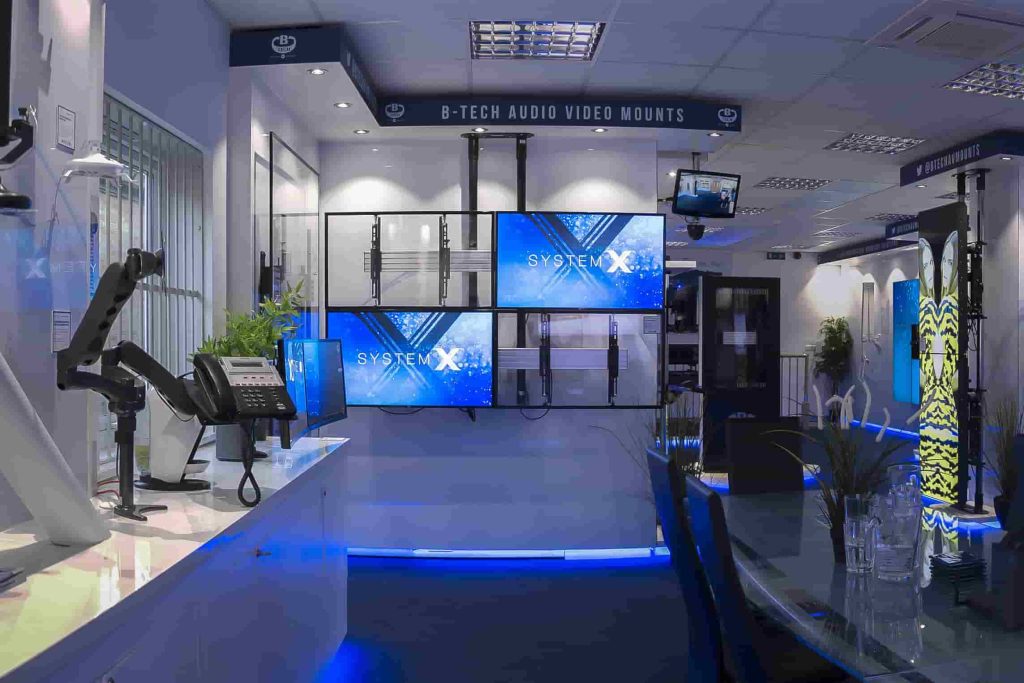
Opt for modular display systems that can be easily reconfigured and adapted to accommodate changing product lines or themes. These systems typically feature interchangeable components, such as shelves, panels, and signage holders, allowing for flexible arrangements.
Choose display fixtures with adjustable heights and widths to accommodate different product sizes and create visually appealing arrangements.
Consider using gridwall or slatwall systems that allow for the attachment of hooks, shelves, or hanging displays, providing versatility in showcasing various products.
Install movable partitions or sliding panels to create flexible exhibit spaces that can be easily reconfigured for different events or product categories.
Utilize portable display units, such as folding displays or roll-up banners, that are lightweight and easy to transport, enabling you to participate in off-site exhibitions or events.
Incorporate rotating or revolving displays that showcase multiple products within a limited space, maximizing visibility and creating an interactive experience.
Integrate digital display systems that can be updated with new content or product information easily, eliminating the need for manual signage changes.
Utilize freestanding display fixtures with adjustable shelving or modular components to showcase a variety of products while maintaining an organized and visually appealing layout.
Consider display systems with built-in lighting options, such as LED spotlights or backlighting, to enhance the visibility and attractiveness of your products.
Incorporate versatile storage solutions within the display systems, such as drawers, cabinets, or hidden compartments, to keep your showroom organized and minimize clutter.
By incorporating versatile display systems, you can easily adapt your showroom and exhibits to suit different product displays, promotions, or events, providing a fresh and engaging experience for your customers.
Branding and Signage:
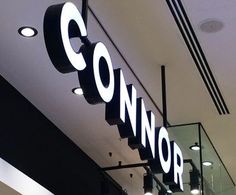
Design visually appealing signage that reflects your brand identity and captures the attention of customers. This includes your company logo, tagline, and consistent use of brand colors and typography.
Install prominent exterior signage that clearly identifies your showroom and exhibits, making it easy for customers to locate your business.
Incorporate digital signage or video walls to display dynamic content and captivating visuals that showcase your products, promotions, or brand story.
Use high-quality materials for your signage, such as metal, acrylic, or backlit displays, to convey a sense of professionalism and durability.
Consider incorporating signage with 3D elements or dimensional lettering to create a visually striking effect that stands out.
Use signage strategically to guide customers through the showroom, directing them to different product areas or highlighting special offers.
Ensure that your signage is easily readable from various angles and distances, considering factors such as font size, color contrast, and proper lighting.
Incorporate signage that communicates key information, such as product features, pricing, or any special warranties or guarantees.
Maintain consistency in your signage throughout the showroom, ensuring that the design, colors, and messaging align with your overall brand image.
Consider incorporating interactive digital signage that allows customers to interact with the content, providing them with additional information or ways to engage with your brand.
By focusing on branding and signage, you can create a cohesive and visually appealing experience for customers, reinforcing your brand identity and effectively communicating your products and promotions.
Material Selection:
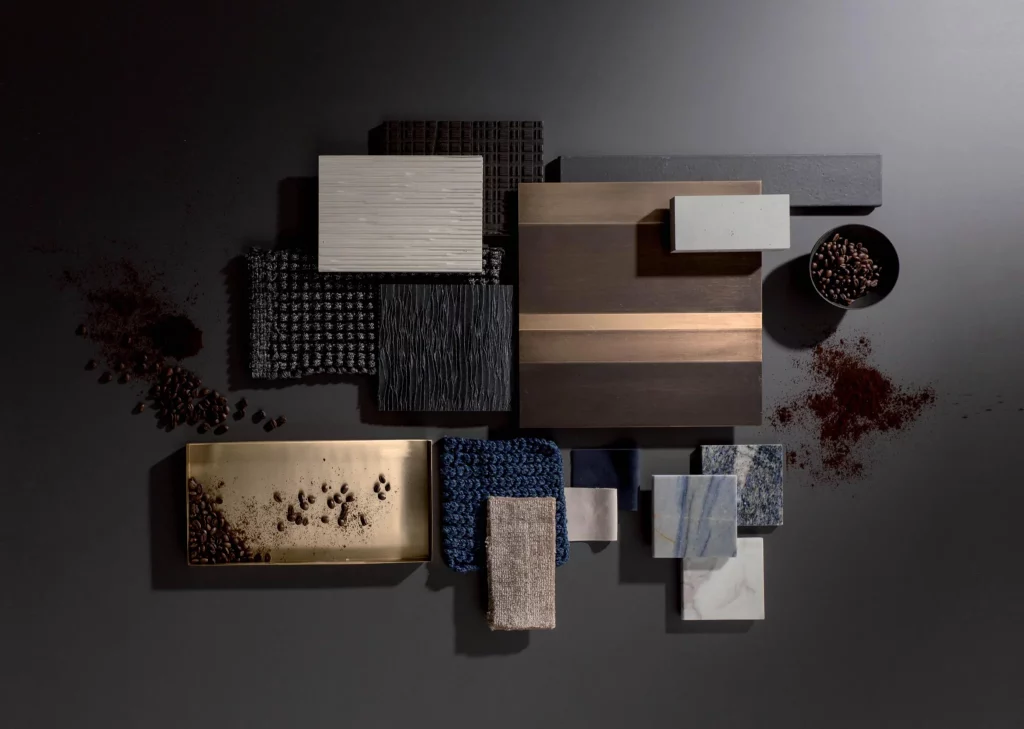
Choose high-quality materials that align with your brand image and convey a sense of sophistication and durability.
Consider materials such as natural wood, polished metals, glass, or stone to create a premium and luxurious feel within your showroom.
Incorporate eco-friendly materials, such as reclaimed wood or recycled plastics, to demonstrate your commitment to sustainability and environmental consciousness.
Opt for easy-to-clean and low-maintenance materials that can withstand heavy foot traffic and frequent handling.
Use materials with a variety of textures and finishes to add visual interest and create a tactile experience for customers.
Consider incorporating materials that have sound-absorbing properties to reduce noise levels and create a more comfortable environment.
Select materials that are resistant to wear, stains, or scratches, ensuring that your showroom maintains its pristine appearance even with regular use.
Incorporate materials that provide excellent lighting reflection or diffusion to enhance the overall ambiance and make your products stand out.
Utilize materials that can be easily customized or branded with your logo, such as etched glass or engraved metal, to reinforce your brand identity.
Consider the durability and longevity of the materials, ensuring that they can withstand the test of time and maintain their aesthetic appeal.
By carefully selecting materials that align with your brand image and meet your practical requirements, you can create a showroom that not only looks impressive but also stands up to the demands of daily use, leaving a lasting impression on your customers.
Technology Integration:
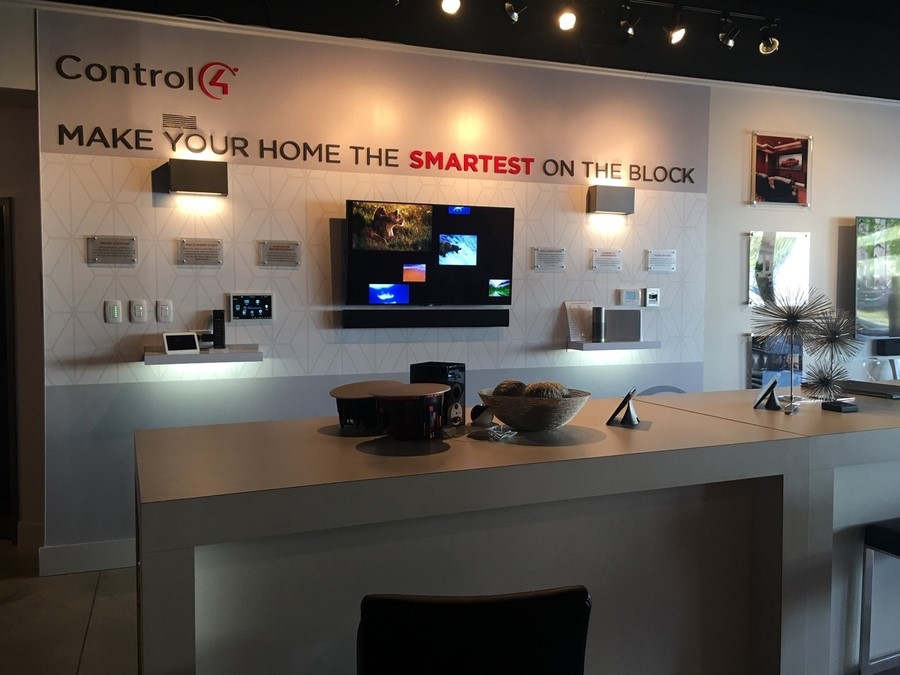
Incorporate audiovisual equipment such as large screens, video walls, or projectors to showcase product demonstrations, brand videos, or captivating visuals that engage and educate customers.
Install interactive touch screens or tablets that allow customers to browse through your product catalog, access detailed information, or even place orders directly.
Utilize smart home automation features to control lighting, sound, and other elements of your showroom with ease. This can enhance the overall experience for both customers and staff.
Integrate beacon technology or RFID tags to provide personalized experiences for customers, such as targeted product recommendations or special offers based on their preferences.
Implement virtual reality (VR) or augmented reality (AR) experiences to allow customers to virtually try out products, visualize them in different settings, or see detailed features and specifications.
Utilize mobile apps or QR codes to provide additional information, promotions, or interactive experiences for customers while they browse your showroom.
Install charging stations or wireless charging pads to cater to customers’ need for convenient device charging while they explore your showroom.
Implement digital signage or displays that can be easily updated with real-time content, allowing you to showcase the latest products, promotions, or customer testimonials.
Integrate customer relationship management (CRM) or customer data management systems to track customer preferences, purchase history, and provide personalized recommendations or follow-up communications.
Utilize analytics tools to gather data on customer behavior, engagement, and preferences, enabling you to make data-driven decisions and continually improve the showroom experience.
By integrating technology effectively, you can create a modern and interactive showroom that enhances customer engagement, provides personalized experiences, and showcases your products and brand in innovative ways
Comfortable Customer Spaces:
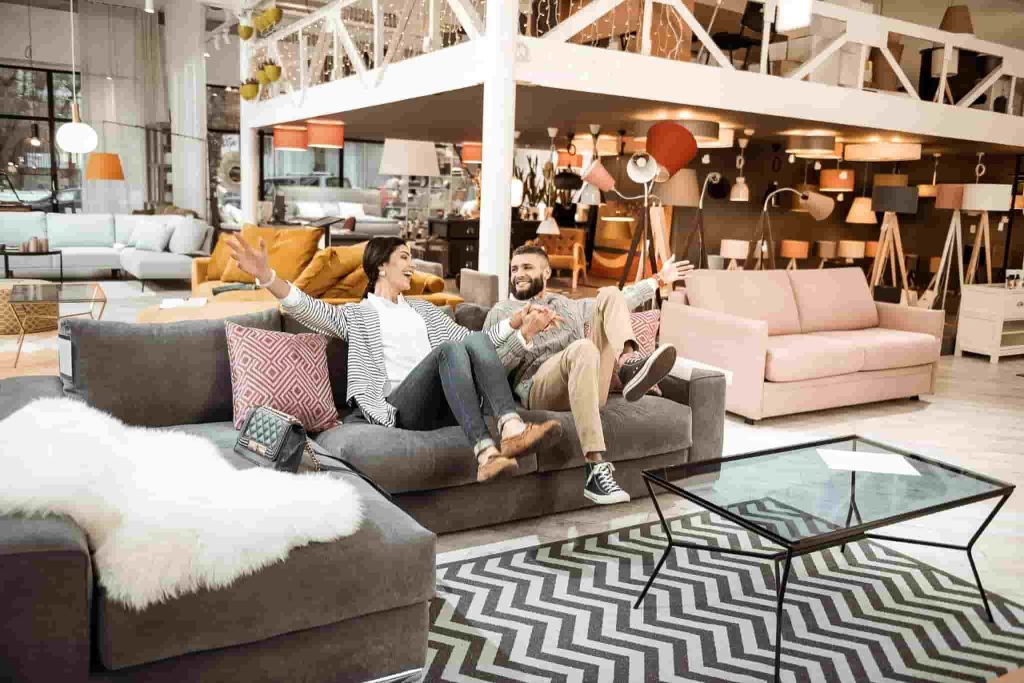
Create dedicated seating areas within your showroom where customers can relax, gather their thoughts, or have discussions.
Choose comfortable seating options such as plush chairs, sofas, or lounge furniture that provide both support and aesthetic appeal.
Incorporate tables or surfaces for customers to place their belongings, beverages, or product samples.
Ensure the seating areas are well-lit and adequately ventilated to create a pleasant and inviting atmosphere.
Consider incorporating charging stations or outlets near the seating areas so customers can conveniently charge their devices while they relax.
Provide amenities such as water stations, coffee machines, or refreshment stations to offer a welcoming and hospitable environment.
Incorporate sound-absorbing materials or acoustic treatments to reduce noise levels and create a more peaceful and comfortable space.
Pay attention to the layout and spacing of the seating areas to allow for privacy and ease of movement.
Add decorative elements such as artwork, plants, or decorative lighting to enhance the aesthetics and create a calming ambiance.
Ensure the seating areas are accessible for customers with disabilities, providing ample space for wheelchair maneuverability and considering the height and comfort of seating options.
By creating comfortable customer spaces within your showroom, you can provide a welcoming and relaxing environment where customers can comfortably explore your products, engage in conversations, and have a positive experience with your brand.
Elevate your customer spaces with Concept Design Develop INC, the experts in commercial remodeling. Create comfort and style with our services.
Greenery and Natural Elements:

Incorporate live plants and greenery throughout your showroom to bring a touch of nature indoors. Choose plants that are low-maintenance and suitable for the indoor environment.
Create plant displays or green walls to add visual interest and create a calming and inviting atmosphere.
Install large windows or skylights to maximize natural light, create a sense of openness, and allow for a connection to the outdoor environment.
Consider using sustainable materials in your showroom design, such as bamboo, reclaimed wood, or recycled materials, to demonstrate your commitment to environmental consciousness.
Use natural elements such as stone, pebbles, or water features to create a sense of tranquility and harmony within the space.
Incorporate natural textures and materials in your furnishings or display fixtures, such as wood grain or natural fibers, to add warmth and authenticity.
Utilize natural scents or aromatherapy to create a pleasant and inviting fragrance within your showroom.
Install energy-efficient windows or shading systems to regulate temperature and reduce energy consumption while maintaining a connection to the outdoor environment.
Consider incorporating biophilic design principles, which aim to create spaces that mimic natural environments and promote well-being and productivity.
Implement sustainable landscaping practices such as rainwater harvesting, use of native plants, or permeable surfaces to minimize environmental impact and create an eco-friendly showroom.
By incorporating greenery and natural elements into your showroom, you can create a refreshing and calming environment that appeals to customers’ senses, promotes well-being, and aligns with sustainable design principles.
Customized Storage Solutions:
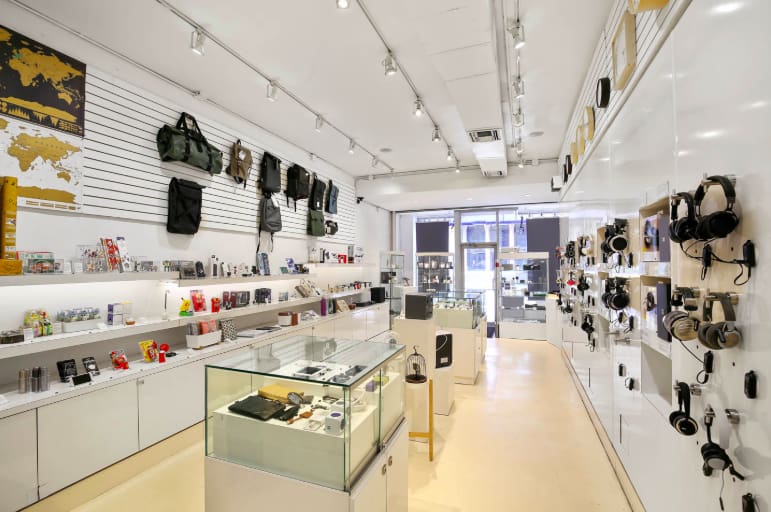
Assess your storage needs and create a customized storage plan that maximizes the use of available space in your showroom.
Incorporate built-in storage cabinets, shelves, or drawers that blend seamlessly with the overall design aesthetic of your showroom.
Utilize adjustable shelving or modular storage systems that can be easily reconfigured to accommodate changing product inventory or display requirements.
Consider incorporating glass display cases or cabinets with lighting to showcase smaller or more delicate products securely.
Install storage solutions that prioritize accessibility and ease of use, allowing staff members to retrieve or restock items efficiently.
Incorporate storage options that keep your showroom organized and clutter-free, such as hidden compartments, pull-out drawers, or built-in bins.
Use labeling or signage systems to clearly identify different storage areas and ensure easy retrieval of items when needed.
Incorporate lockable storage options to secure valuable or sensitive items, providing peace of mind for both staff and customers.
Utilize vertical space efficiently by incorporating wall-mounted storage racks, pegboards, or hanging systems to display products or accessories.
Consider integrating technology such as RFID tracking or inventory management systems to streamline storage processes and ensure accurate stock management.
By implementing customized storage solutions, you can optimize your showroom space, maintain a neat and organized environment, and efficiently manage your inventory and display needs. This enhances the overall functionality and aesthetics of your showroom while creating a positive experience for both staff and customers
Accessibility Features:

Ensure your showroom is wheelchair accessible by providing ramps or elevators for easy entry and exit.
Install wide doorways to accommodate wheelchair users and individuals with mobility aids.
Place clear signage indicating accessible routes, entrances, and restrooms.
Provide designated accessible parking spaces close to the entrance of the showroom.
Install handrails or grab bars in appropriate locations, such as ramps, staircases, or restrooms, to assist individuals with balance or mobility challenges.
Consider incorporating tactile flooring or textured surfaces to assist individuals with visual impairments in navigating the space.
Ensure that all areas of the showroom, including product displays and interactive features, are accessible to individuals of different heights or with limited reach.
Provide accessible restrooms that comply with ADA (Americans with Disabilities Act) guidelines, including adequate space, grab bars, and accessible fixtures.
Consider incorporating braille information or tactile signage to provide accessibility for individuals with visual impairments.
Train staff members on accessibility awareness and sensitivity to provide assistance and support to customers with disabilities.
By incorporating accessibility features, you create an inclusive environment that welcomes and accommodates individuals with disabilities. This not only ensures compliance with accessibility regulations but also promotes a positive and inclusive experience for all customers who visit your showroom
FAQS
What is exhibition design process?
The exhibition design process involves conceptualizing, planning, and executing the design of an exhibition, including space layout, visual elements, interactive components, and overall visitor experience
What is 4 importance of an exhibition?
Showcasing Products/Services: Exhibitions provide an opportunity to display and promote products/services to a targeted audience.
Networking: Exhibitions facilitate networking and building connections with potential customers, partners, suppliers, and industry professionals.
Brand Visibility: Exhibitions enhance brand visibility and awareness, increasing recognition and establishing credibility in the industry.
Market Research: Exhibitions allow for direct customer interaction, gathering valuable insights and feedback for market research and product/service improvement.
What is commercial interior design?
Commercial interior design focuses on creating functional, aesthetically pleasing, and optimized interior spaces for commercial settings such as offices, retail stores, restaurants, hotels, and other business environments, considering brand image and customer experience.
What are the 4 elements of visual merchandising?
The four elements of visual merchandising are:
Window displays: Captivating displays in storefront windows to attract attention.
Store layout: Effective arrangement of products and fixtures to optimize traffic flow and enhance the shopping experience.
Lighting: Proper lighting to highlight products and create ambiance.
Signage and graphics: Clear and visually appealing signage and graphics to convey information and reinforce the brand identity
Conclusion
In conclusion, when it comes to remodeling your showroom and exhibits in Santa Rosa, there are numerous ideas to consider. Enhancing lighting, incorporating interactive displays, utilizing versatile display systems, and paying attention to branding and signage are crucial elements. Additionally, focusing on material selection, technology integration, creating comfortable customer spaces, and incorporating greenery and natural elements can elevate the overall experience. Customized storage solutions and accessibility features ensure efficiency and inclusivity. By carefully considering these aspects, you can transform your showroom into an engaging, attractive, and functional space that leaves a lasting impression on your customers.

